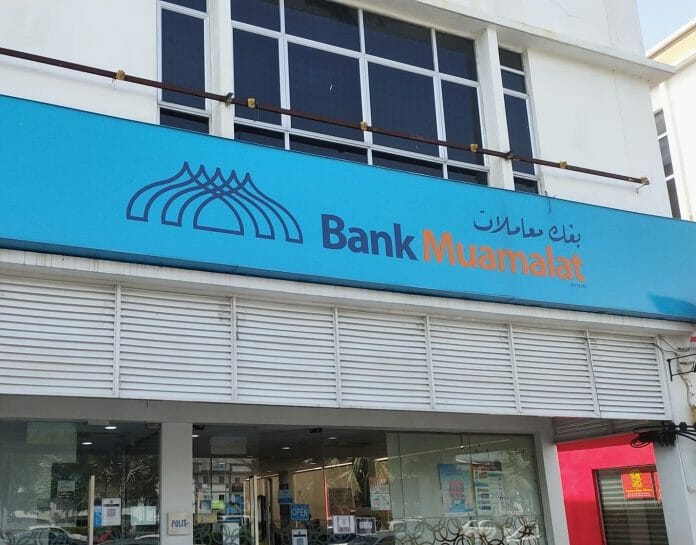Bank Negara’s Monetary Policy Committee recently decided to increase the Overnight Policy Rate (OPR) by 25 basis points to 2.25%.
This is consistent with BNM’s view the unprecedented conditions that necessitated a historically low OPR have continued to recede. Over the course of the Covid-19 crisis, the OPR was reduced by a cumulative 125 basis points to a historic low of 1.75% to provide support to the economy.
With the domestic growth on a firmer footing, BNM has decided to begin reducing the degree of monetary accommodation. This will be done in a measured and gradual manner, ensuring that monetary policy remains accommodative to support sustainable economic growth in an environment of price stability. It will also continue to assess evolving conditions and their implications on the overall outlook to domestic inflation and growth.
Inflationary pressures have continued to increase mainly due to elevated commodity prices and strong demand conditions, despite some easing in global supply chain conditions.
Going forward, the pace of global growth is expected to moderate, and will continue to be affected by the elevated cost pressures, conflict in Ukraine, global supply chain conditions, and financial market volatility.
In recent months, exports and retail spending indicators in Malaysia affirm the positive growth momentum, supported by the transition to endemicity, and in the labour market, the unemployment rate declined further, with higher labour participation and improving income prospect.
Looking ahead, while external demand is expected to moderate, weighed by headwinds to global growth, economic growth will be supported by firm domestic demand.
Additionally, the reopening of international borders since April 1 would facilitate the recovery in tourism-related sectors. Investment activity and prospects continue to be supported by the realisation of multi-year projects
Year-to-date, headline inflation has averaged 2.4%. While it is projected to remain within the 2.2% – 3.2% forecast range for the year, headline inflation may be higher in some months due mainly to the base effect of electricity prices.
Underlying inflation, as measured by core inflation, is expected to average between 2.0% – 3.0% in 2022 as demand continues to improve amid the high-cost environment.
Nevertheless, the extent of upward pressures on inflation will remain partly contained by existing price controls, fuel subsidies and the continued spare capacity in the economy.
Many have welcomed the central bank’s move in increasing the OPR in light of the global rise in inflation rates.
However, Umno Youth chief Asyraf Wajdi Dusuki has warned that a successive increase in OPR will directly lead to a higher cost of living. It was “inconclusive” to state raising the OPR would keep inflation low, he added.
He pointed out that a family with housing and other loans, and a car would see their monthly costs go up by hundreds of ringgit should loan repayment rates be hiked.
In simple terms, a higher OPR means banks will pass on the higher borrowing cost in the form of a higher lending/interest rate to consumers, which in turn increases the amount of their monthly instalment payment.
But the Umno Youth chief forgets this is not necessarily true, as changes in OPR do not affect a lending rate that is fixed, as opposed to a variable or floating rate.
Moreover, car and personal loans are typically fixed rate loans, which means the lending/interest rate for the loans does not change throughout the period of the loan. Hence, current borrowers on fixed rate loans will see no change in their monthly instalments with a rise in OPR.
Also, one with a floating housing loan rate can still maintain the same monthly instalment despite an increase in OPR in lieu of an increase in loan tenure. Banks will always give this option to their clients that are on a floating loan rate whenever there is an increase in OPR to maintain the same monthly instalment in lieu of an increase in loan tenure.
According to analysts, if you have a 30-year housing loan of RM500,000 at a floating lending/interest rate of 3.83%, the monthly instalment will be RM2,367.
When the OPR is increased by 0.25%, the bank’s lending/interest rate is thus increased to 4.08%, the repayment period of your home loan will then increase by 2 years to 32 years if you choose to keep the monthly instalment the same at RM2,367.
Also, a 0.25% increase in OPR for the same quantum of loan as above is likely to increase the monthly instalment payment by about RM71, and not by hundreds of ringgit, as alleged by Asyraf.
So, it can be clearly seen when he said a family with housing and other loans, and a car would see their monthly costs go up by hundreds of ringgit with an increase in OPR, Asyraf is just exaggerating things.
His conclusion “this is not the right time to consider removing subsidies, floating ceiling prices and raising the OPR because it will directly raise the (cost of living)” is way off the mark.
He is just repeating what the opposition says with regards to removing subsidies and floating ceiling prices when his Umno Prime Minister, Datuk Seri Ismail Sabri Yaakop has clarified the government will not remove subsidies or introduce floating ceiling prices.
When the PM announced this, the opposition decried he is U-turning on his previous statement of removing subsidies and introducing floating ceiling prices, to which the PM responded he is not making a U-turn but simply listening to the feedback of the rakyat.
The amazing thing is the opposition still went ahead with a protest against removing subsidies when subsidies are not removed, and an Umno Youth chief is supporting the opposition in asking the government to do what it has not done.
Malaysian banks continued to display resilience in 2021 and performed better than in the previous year despite persistent economic headwinds with prolonged movement restrictions, moratoriums and repayment assistance, thanks to the buffers and structural strength built over the years.
According to Moody’s Investors Service, “although the banks would be impacted due to the extended repayment assistance that would affect credit costs and also in terms of profit margins due to a modification cost, structurally the Malaysian banking system has remained strong enough to withstand distress”.
This is the blessing banks in Malaysia have had enjoyed for its noble efforts to help the rakyat cope with the pandemic.
They managed to report stronger income from more optimised cost of funds (CoF) arising from BNM keeping record low an OPR of 1.75% during the challenging period. Therefore, the trick is in offsetting low OPR, which had depressed the net lending/interest income, with lowered CoF.
To mitigate the challenges faced in 2021, banks had exercised more cost cutting and digitalisation processes, put a tighter loan-vetting process, expanded current accounts saving accounts (CASA) base, and focused more on stable fee income via forays into wealth management and premier banking as well as de-risking exercises and balance sheet rebuilding.
The banking sector is expected to do well again this year. What’s more with OPR currently raised to 50 basis points (25 basis points each in May and July), banks will no longer experience a depressed NII.
Together with continuing to maintain best practices like optimising CoF, more cost cutting and digitalisation process, etc., they can afford to be on top of the situation despite the challenges of 2022 which is mainly the galloping rise in global inflation.
Perhaps, the time has come for the banking sector in view of the rising OPR at a time when the rakyat is facing problems with the high cost of living brought about by galloping global inflation, to implement a rakyat-centric and friendly loan regime whereby those of its existing clients with floating rates loans should not be burdened with an increase in monthly instalment due to an increased OPR.
The increase in monthly instalment should instead be just limited to its new clients, effective after the OPR has been raised.
Together with a national campaign for the people to spend within their means in which the banking sector wholeheartedly supports, this could reduce the high household debt in Malaysia.
Spending within one’s mean does not necessarily mean loan growth will be curtailed which will then impact banks’ earnings. Rather it means you should take up loans if you can afford it.
And the acid test for affordability is a good debt-to-income (DTI) ratio. Expressed as a percentage, a DTI ratio is calculated by dividing total recurring monthly debt by monthly gross income. Lenders (banks) prefer to see a DTI ratio smaller than 36%, with no more than 28% going towards servicing your mortgage.
For example, assume your gross income is RM4,000 per month. The maximum amount for monthly mortgage-related payments at 28% would be RM1,120 (RM4,000 x 0.28 = RM1,120). Your lender will also look at your total debts, which should not exceed 36%, or in this case, RM1,440 (RM4,000 x 0.36 = RM1,440).
Malaysian households have nearly RM1.38 trillion worth of debt, exceeding what the federal government owes to its creditors. Our household debt-to-Gross Domestic Product (GDP) ratio fell to 89% as at December 2021 from 89.6% in June 2021. In 2020, the ratio hit a record high of 93.2%.
BNM said the lower ratio as at end 2021 was mainly on the back of stronger nominal GDP growth but added it remained on the higher end when compared to regional economies – Singapore (69.7%); Indonesia (17.2%); and the Philippines (9.9%).
The comments expressed here are solely of the author and do not represent BusinessToday’s views. By Jamari Mohtar is the Editor of Let’s Talk!, an e-newsletter on current affair.









